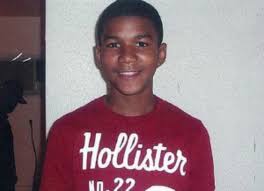The images of the destruction from Hurricane Sandy are just devastating. The heaviness in my heart for those impacted by this storm is immense. I have no doubt that many people are writing about this event, often from a first-hand perspective, and those not writing about it are more likely simply living it.
When I got my children off to school today, I turned on the news and began to see the images and hear the stories. They were all overwhelming, but when I heard about the back-up generator failing at New York University Medical Center, I felt my heart stop and my stomach drop. As a former hospital nurse, I instantly felt the nightmare of that scenario. To be completely honest with you, it was probably one of my biggest fears while I worked at one of the major trauma centers in my city. The thought of having to evacuate even the most stable patient is overwhelming, but when you realize that many of the patients who had to be evacuated from NYU were critically ill, it is almost unimaginable.
Forget the multiple IV machines and other medical equipment needed to keep these patients alive, you also have to take into account the fact that many of them were on ventilators. Ventilators, by the way, take power to run. And when that power fails and the back-up power fails, they have to be operated by battery packs. Sounds simple enough, right? Except when you realize that switching over to battery packs on patients who are LITERALLY being kept alive by mechanical ventilation is not something that you have endless amounts of time to do. In fact, you will have to manually ventilate the patient (as in push air with a bag by hand…you have seen it in the movies and on TV) until you can safely get the battery pack in place. And this is not just one patient, y’all. It was many, many people, including infants in the Neonatal Intensive Care unit. In the middle of the night. With a hurricane raging outside.
You have to get all of these patients, who are most likely unstable on a good day, out of the hospital and through the flooding streets to nearby hospitals. Which, by the way, I would be willing to guess were already a little overwhelmed themselves. There is no way to adequately prepare for this scenario. You can have every disaster code in the world and every practice drill you can imagine, but when reality hits you go into pure survival mode. Literal, lifesaving survival mode. Because as the medical professional in the situation, it is your job, it is your ethical code, it is your moral responsibility. And I would be willing to bet that it was really, really stressful. As if critical care medicine isn’t stressful enough, right?

One example of the amount of effort needed to move a single critical patient. Photo credit: AP Photo/ John Minchillo
In all I have read that NYU evacuated 215 patients to various area hospitals. Of those 215, ABC News reports that 45 of them were critically ill. When you have a family member who is critically ill, you often feel a sense of comfort to know that they are in the hospital getting care. Somehow you feel as though that insulates them from any other potential danger or disaster. Turns out that is not always true. In fact, it turns out that the one place you would really want to believe will always have power can actually lose it. So then your faith turns to those in charge, and you trust that they will ensure your loved ones’ safety. Only this time, they will be doing it in the dark.
To all of the medical professionals who handled this situation like the professionals that they are, my heart is with you today.



